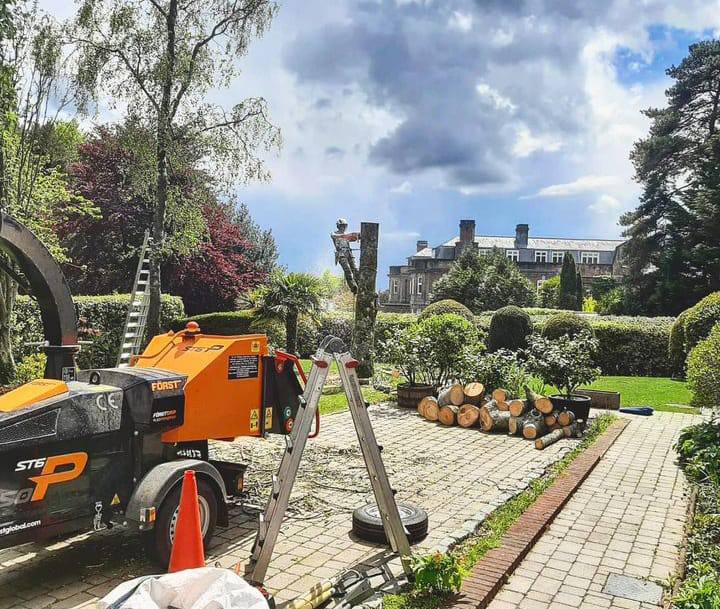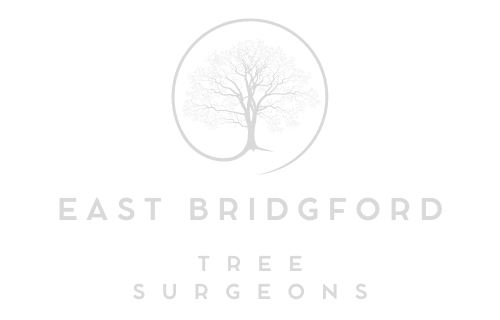When Not to Do Crown Reduction: Avoiding Damage
Introduction
Crown reduction is one of the most common tree surgery techniques carried out across the UK. It helps maintain a tree’s structure, controls its size, and keeps it safe from potential hazards. However, not every tree benefits from this procedure, and in some cases, crown reduction can do more harm than good.
At East Bridgford Tree Surgeons, we’ve seen how well-intentioned but poorly timed or unnecessary crown reductions can lead to stress, decay, or even long-term decline in otherwise healthy trees. Understanding when not to carry out crown reduction is essential to maintaining the long-term health of your trees.
Understanding Crown Reduction
Crown reduction involves selectively trimming branches to reduce the height or spread of a tree’s canopy. Unlike topping, which cuts through major limbs and leaves stubs, crown reduction is carried out with precision to retain the tree’s natural shape and balance.
When done correctly, it encourages healthy regrowth and improves the structural stability of mature trees. However, timing, technique, and the tree’s overall condition all play a vital role in determining whether reduction is appropriate.
When Crown Reduction Should Be Avoided
1. When the Tree Is Already Stressed
If a tree is showing signs of decline — such as sparse foliage, discoloured leaves, or extensive deadwood — crown reduction can further weaken it. Trees rely on their leaves for photosynthesis, and removing too much canopy during stress periods reduces their ability to produce energy.
Common causes of stress include:
- Drought or waterlogging
- Disease or pest infestation
- Soil compaction or poor drainage
- Recent construction damage near the root zone
In these cases, it’s often best to stabilise the tree’s health first before considering any form of pruning.
2. During the Wrong Season
Crown reduction should ideally be performed when the tree is in its dormant phase — typically in late autumn or winter. Undertaking it during the growing season, particularly in spring or early summer, can disrupt active sap flow and encourage excessive regrowth.
For some species, such as birch, maple, and beech, pruning in spring can lead to sap bleeding and energy loss. Timing crown reduction incorrectly can therefore put unnecessary strain on the tree.
3. If the Reduction Amount Is Too Severe
Over-reducing the crown is one of the most common mistakes made during tree surgery. Removing more than 25–30% of the canopy at once can leave large wounds that invite disease and decay. It also destroys the tree’s natural balance, increasing the risk of structural weakness.
At East Bridgford Tree Surgeons, we always aim to retain the tree’s natural form and remove only what’s necessary to achieve safe clearance or balance.
4. When the Issue Is Root-Related
Not all tree problems can be solved by working on the canopy. If the tree’s health issues stem from poor soil conditions, restricted roots, or underground damage, crown reduction will not resolve the problem — and may make it worse.
Instead, focus should be placed on root zone management, such as improving soil aeration, adjusting watering practices, or applying mulch to retain moisture.
5. On Young or Recently Planted Trees
Young trees are still establishing their root systems and overall structure. Reducing their crowns too early can hinder development and lead to poor form as they mature. It’s better to allow the tree to grow naturally for several years before any major pruning is considered.
Structural pruning can be used selectively on younger trees to correct shape, but full crown reduction should be avoided until the tree is mature enough to withstand it.
6. When the Real Problem Is Poor Maintenance
Sometimes property owners request crown reduction because the tree appears overgrown or unmanageable. However, this can often be addressed through less invasive techniques such as crown thinning, deadwood removal, or selective pruning.
These options help maintain light levels, reduce wind resistance, and improve appearance without drastically cutting back healthy growth.
The Risks of Unnecessary Crown Reduction
Structural Weakness
Removing too much foliage can lead to unbalanced growth, where new shoots grow rapidly but with weaker wood. This makes the tree more vulnerable to storm damage and breakage in the future.
Increased Susceptibility to Disease
Large pruning cuts create open wounds that expose the tree to fungal infections and decay. Over time, this can compromise internal wood structure and reduce overall lifespan.
Reduced Aesthetic Appeal
Over-reduced crowns often look unnatural and unbalanced, detracting from the beauty of the landscape. A skilled arborist aims to preserve both health and appearance — ensuring the tree remains an asset rather than an eyesore.
Alternatives to Crown Reduction
Before deciding on crown reduction, consider whether other tree care methods may be more suitable:
- Crown thinning: Removes select internal branches to improve airflow and light penetration.
- Crown lifting: Removes lower branches to provide clearance without affecting the overall height.
- Deadwood removal: Targets only unsafe or unhealthy branches to improve safety and appearance.
- Formative pruning: Shapes younger trees for long-term strength and balanced growth.
These techniques are often less invasive and can achieve the desired results without over-stressing the tree.
Why Choose East Bridgford Tree Surgeons
At East Bridgford Tree Surgeons, we take a scientific and ethical approach to tree care. We assess each tree individually, considering its species, age, health, and surrounding environment before recommending any work. Our experienced team ensures that crown reduction is only carried out when it genuinely benefits the tree’s long-term wellbeing.
We provide professional advice, precise techniques, and safe practices to ensure every tree in East Bridgford and surrounding areas continues to thrive.
Conclusion
Crown reduction can be an excellent way to manage mature trees, but only when done correctly and for the right reasons. Inappropriate or poorly timed reductions can cause lasting harm and even lead to the decline of otherwise healthy specimens.
For professional advice and responsible tree care, homeowners and property managers in East Bridgford can rely on East Bridgford Tree Surgeons. Our goal is always to preserve the health, structure, and beauty of your trees — ensuring they remain safe and strong for years to come.
Call us on: 0115 647 1178
Click here to find out more about East Bridgford Tree Surgeons
Click here to complete our contact form and see how we can help with your tree needs.

